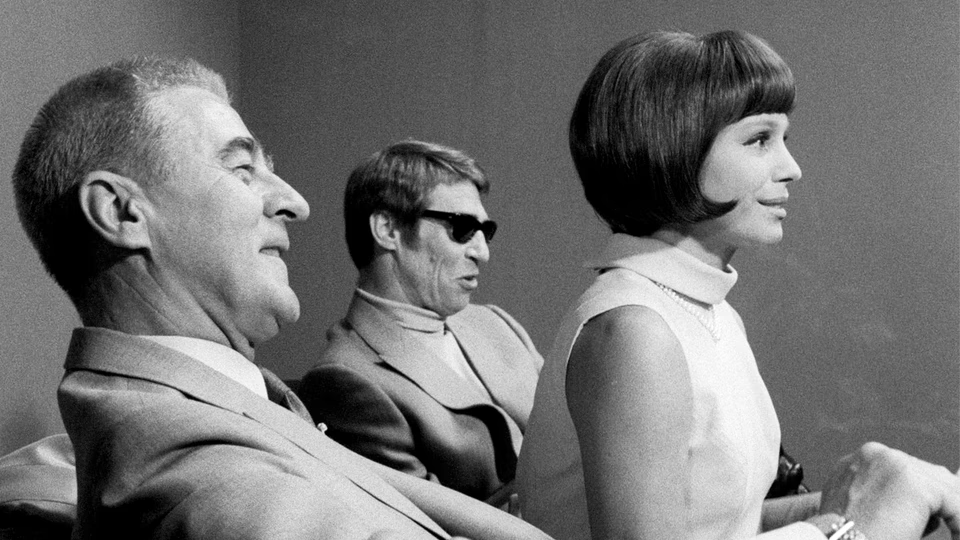The Rite

Ingmar Bergman’s The Rite opens with a stern judge peering through a magnifying glass directly into the camera—directly at us. This is Bergman at his most confrontational, telling us this isn’t just a film about artistic persecution, but an examination of the audience itself. What do we expect from our artists? What right do we have to demand anything from them at all?
Shot for Swedish television, The Rite feels like Bergman working without a net. The television production constraints—spartan sets, limited camera movement—become artistic advantages. Instead of his usual sweeping cinematography, Bergman opts for suffocating close-ups that turn the interrogation of three traveling performers into a claustrophobic chamber piece.
The plot is deceptively simple: a judge investigates a possibly indecent theatrical performance by a trio of renowned pantomime artists. But as the investigation deepens, both the investigator and the investigated spiral into self-destructive impulses. Bergman, fresh from his contentious departure as director of Sweden’s Royal Dramatic Theatre, isn’t subtle about his targets. The officious judge represents every critic and bureaucrat who ever questioned his artistic choices, while the performers mirror aspects of Bergman himself—particularly in one remarkable scene where a performer casually admits to not knowing how many children he has, only that his lawyer ensures their mothers get paid. (Bergman, at the time, was heading for his fourth divorce and had fathered nine children by six women.)
What elevates The Rite above mere artistic score-settling is its unsettling atmosphere. The score, decades ahead of its time, employs dissonant, minimalist arrangements that would later become a staple of modern horror. Bergman’s command of tension is masterful, even if some of his experimental flourishes don’t quite land—a scene involving attempted self-immolation feels particularly disconnected from the narrative.
The film builds to a performance of the titular “Rite,” and here’s where Bergman shows his hand. After sixty-some minutes of psychological horror and mounting dread, we’re presented with something so outrageous—complete with strap-on phalluses and ritualistic nudity—that it borders on dark comedy. It’s Bergman thumbing his nose at his critics, essentially saying, “You want scandal? Here’s your scandal!”
This finale will likely divide viewers. Those invested in the psychological thriller aspects may feel shortchanged by the sudden shift into Grand Guignol territory. Yet there’s something admirable about Bergman’s audacity. He builds tension like a master horror director, only to defuse it with a provocateur’s laugh.
The Rite isn’t Bergman’s masterpiece, but it might be his most personal film of the period. It’s a work of barely contained fury at artistic restriction, at criticism, at the very notion of having to explain one’s art to anyone. That it manages to be both a compelling psychological thriller and a middle finger to the establishment is testament to Bergman’s skill, even when working with limited resources.
The film’s R-rated elements (which would raise eyebrows even today) seem almost quaint compared to its real transgression: suggesting that perhaps artists owe their audience nothing, and that the very act of demanding explanation or justification from them is a kind of violence. It’s not a comfortable message, but then again, Bergman never was one for comfort.